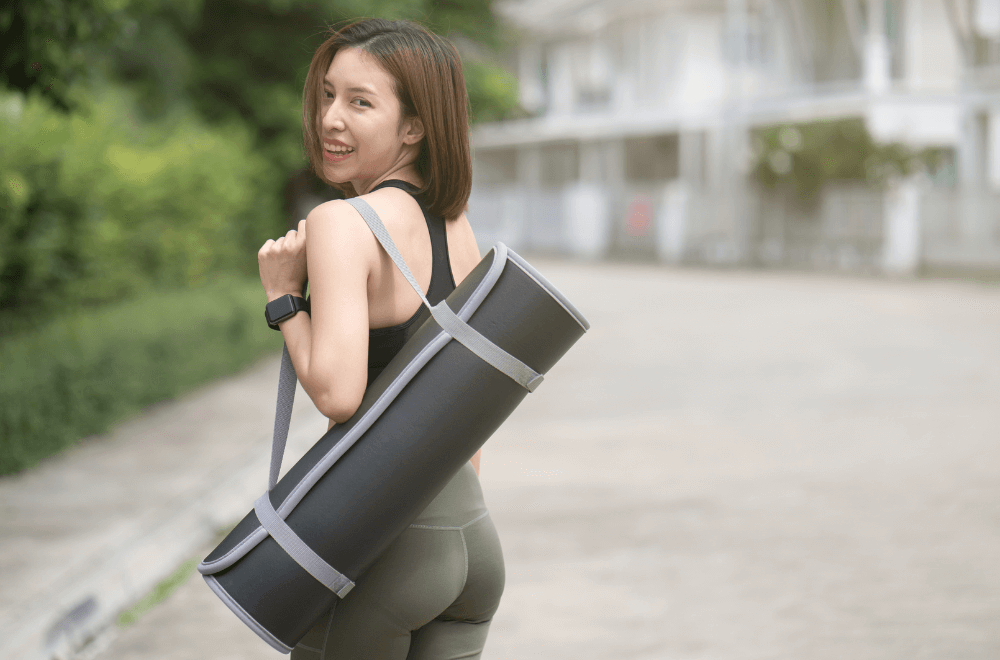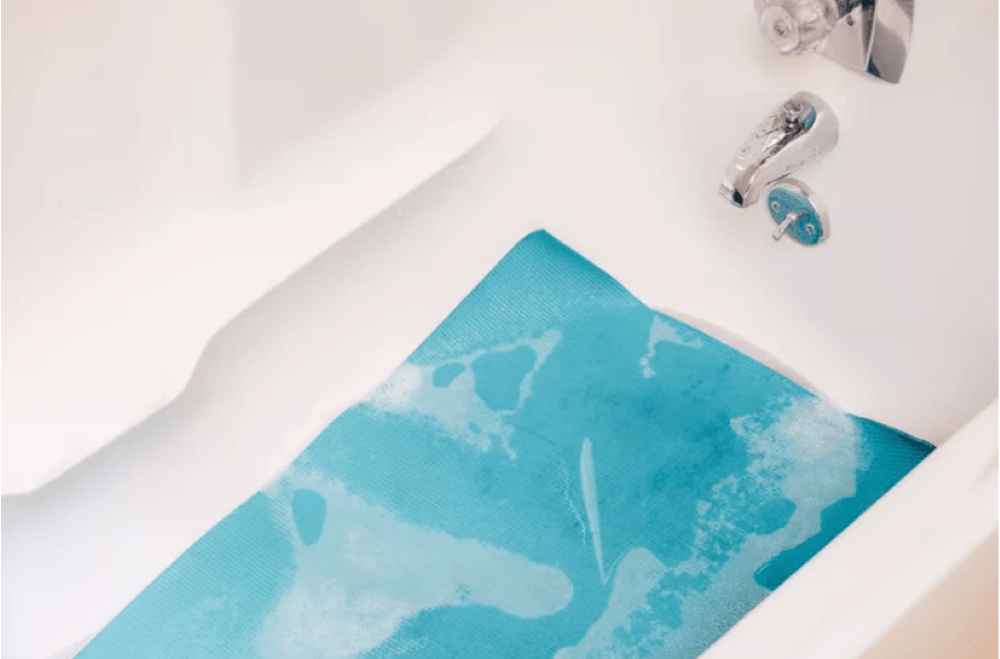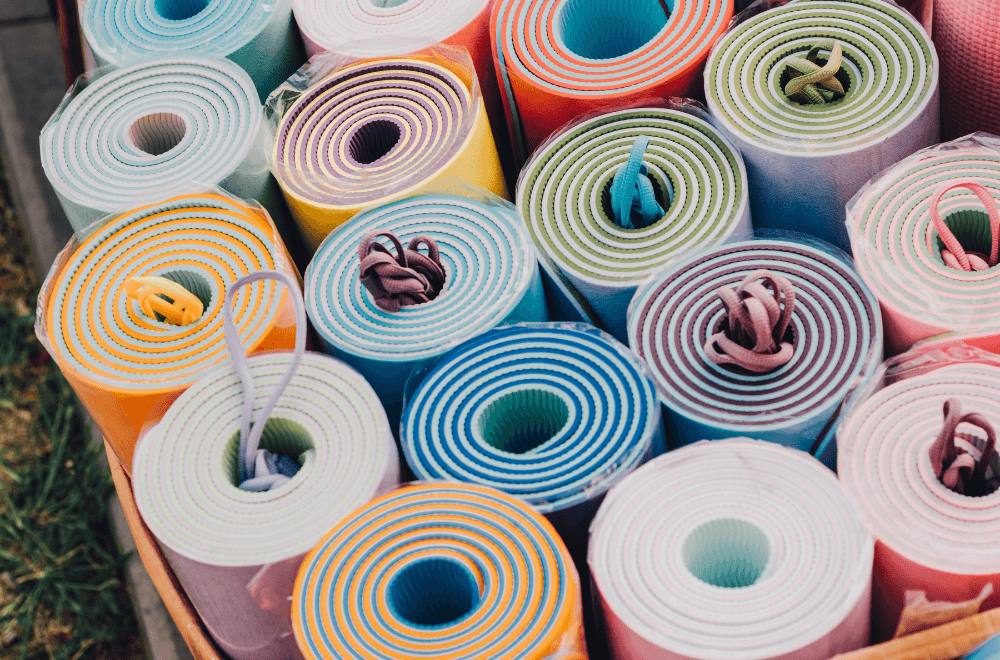Going to your first yoga class can be exciting but intimidating, so you might be wondering, “do yoga studios provide mats?” Or is it wise to bring your own?
Like any new class, the first day of yoga can feel intimidating; everything is unfamiliar, and you may not be sure you have everything you need. Every yoga studio is different from what they provide; cheaper, smaller studios may expect you to bring your own mat, but more luxurious, expensive ones will have it covered. It’s best to check with your yoga studio in advance so you can come prepared.
Contents
What The Yoga Studio Provides
When it comes to what a yoga studio provides, it largely depends on the studio and how much they charge. For smaller studios that are a bit cheaper, you might be expected to bring all your equipment while they provide the space and instruction. However, mid to high-tier studios usually allow students to borrow pieces of yoga equipment. This equipment can include:
- Yoga mats
- Yoga belts
- Yoga blocks
- Blankets
- Towels
Some studios, such as “hot yoga,” may offer complimentary water. Once again, the amount of extras or equipment a studio provides is usually in-line with size, brand, and price. Our guide on what to bring to yoga might be useful.
What You Should Bring To A Yoga Studio
Although many, if not most, studios will provide you with some essential equipment, it’s usually a good idea to bring your mat. This is because the studio may only have a limited number of mats, or they may not be as comfortable or sanitized as your mat.

The ugly truth about community-use yoga mats is that unless the studio is diligent in cleaning and sanitizing after every class, you can pick up some nasty infections such as acne, skin infections, toenail fungus, staph infections, and even herpes. This is why it’s usually wise to have a mat that you allow no one else to use.
Yoga Mat Cleaning Tips
If you don’t have a mat, another item you can bring is cleaning wipes or cleaning spray and rags. To properly clean your mat, ensure that you wet the mat’s surface and allow it to dry for at least five to ten minutes, but don’t rush the process. Cleaning wipes need to transfer enough cleaner to a surface and dry without wiping to efficiently neutralize or eliminate germs and viruses.
Another excellent cleaning tool is UV lights that you can run over the surface of a mat. However, you want to take your time going over the carpet, holding the light in one spot for at least 20-30 seconds before moving it. This may take more time but will provide deeper cleanliness.
It’s always best to clean your mat after each session. You also want to check your mat’s instructions as some brands advise against using certain cleaners, such as those that are vinegar-based or have high concentrations of compounds such as essential oils.
Deep Cleaning
Most yoga mats are either open or closed-cell mats, which require different deep cleaning methods. You’ll also want to clean your mat deeply if you live in a warmer climate or practice yoga in heated rooms. Here are the best ways to clean open-cell mats.
- Place your mat in a bathtub or sink filled with warm soapy water. You can use dish soap, but only about a tablespoon per gallon of water. Don’t use hot water, as it could damage your mat.
- Completely submerge the mat in water, allowing it to soak for about five minutes. Then gently scrub using a soft cloth.
- Rinse your mat off using clean water, removing any soap residue.
- After you’ve washed your mat, shake it out and let it air dry for as long as possible.

If you have a closed-cell yoga mat, you’ll need to follow different instructions. You might also be interested in our guide on how to make your own yoga mat cleaner spray.
- Lay out your mat on a flat surface.
- Create soapy water using warm water and dish soap in a bowl or bucket.
- Dip the rag in the water, then use it to clean the entire surface of the mat on both sides.
- Prioritize scrubbing and cleaning dirty spots with a circular motion.
- Wipe your mat dry with a clean towel.
- Allow your mat to air dry for no less than 30 minutes.
You always want to allow your mat to air dry and should never put it in a dryer. After your mat is dry, tightly roll it up and store it somewhere with good air ventilation. It’s also a good idea to open your mat up every few weeks to allow air to circulate. Should your mat begin peeling or pieces of it begin sticking to your clothing, it’s high time to retire it and buy a new one.



